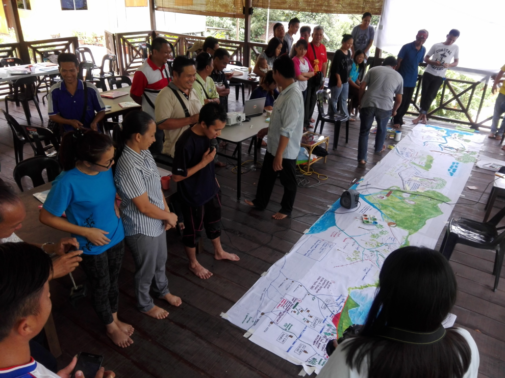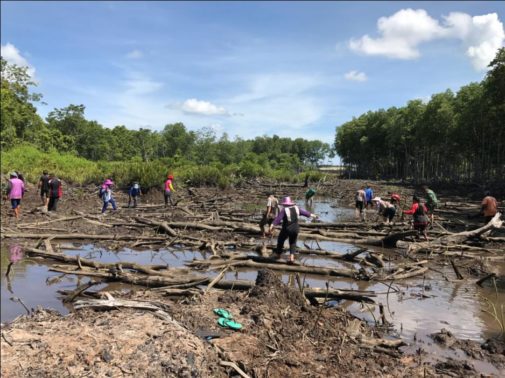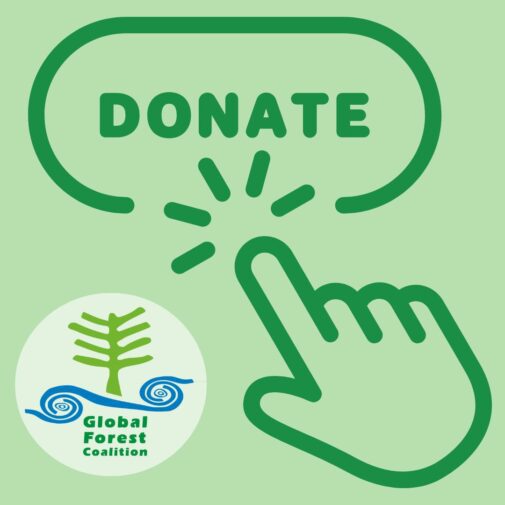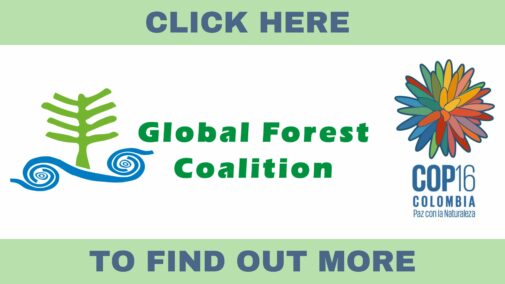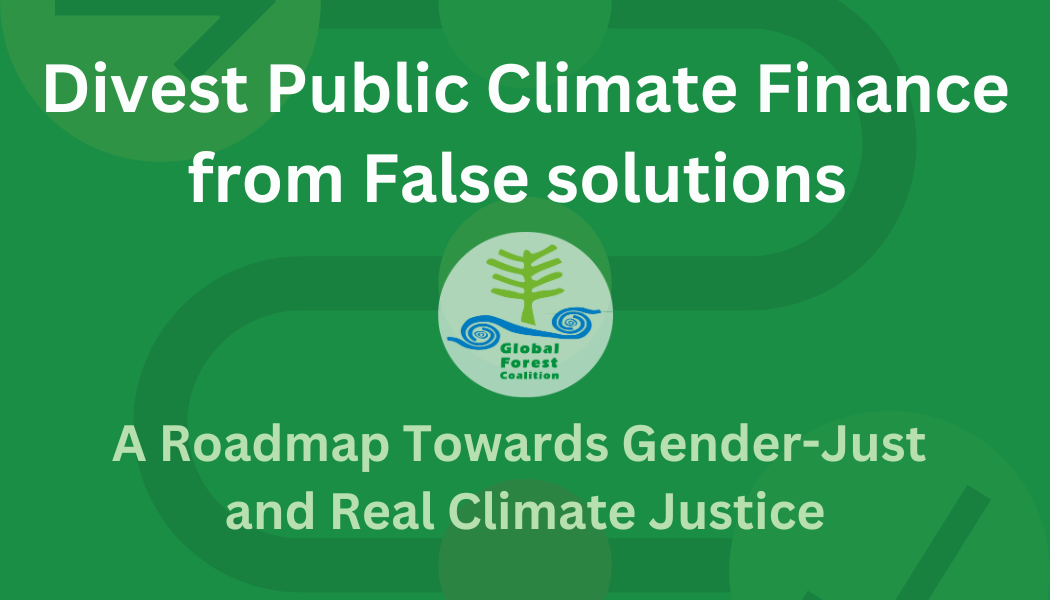Community Conservation Resilience Initiative in Sabah, Malaysia
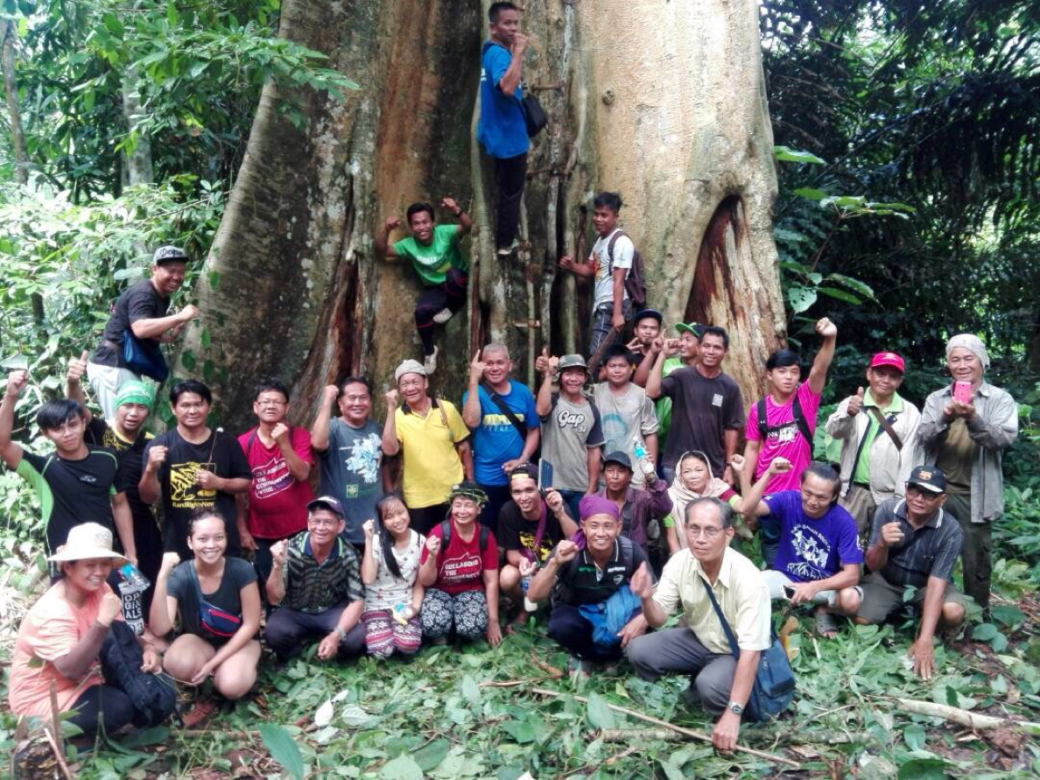
Download the summary report (English)
INTRODUCTION
The Community Conservation Resilience Initiative (CCRI) was undertaken with five villages in Sabah. These emblematic sites were chosen as they reflect diverse land use practices that are commonly observed by their respective communities.
Sg. Eloi is in the Pitas district, specifically in the mangrove areas at the mouth of the Pitas River, and community members are working to protect, restore and apply sustainable use of their community mangrove forest. Alutok is in the Tenom district, parts of which is located within a commercial forest reserve, the Sipitang Forest Reserve, and the community is working to secure and highlight their traditional practices of forest management. Kiau is located at the foot of Mount Kinabalu in the district of Kota Belud and community members are now actively seeking formal recognition for their lands from the government, and the revival of their traditional practices. Mengkawago is in the district of Tongod, the whole of it within a commercial forest reserve, the Mengkawago Forest Reserve, and community members are trying to secure the community forest for the continuity of their traditional practices. Terian is in the district of Penampang, on the mountains along the Crocker Range. The core village settlement is located right next to the boundary of the Crocker Range Park but parts of the broader territory are overlapped by the Park. They are working to strengthen their community watershed management system.
With independent funding from the Commonwealth Foundation, this three-year project (2015-2017) aims to increase the resilience of the Indigenous Peoples’ customary institutions and natural resource stewardship systems through constructive engagement with decision-making processes. The project involves documentation of customary institutions and natural resource stewardship systems, strengthening of local and international networks, and engagements with policy- and decision-makers to improve implementation of supportive laws and to promote legal and institutional reform. It involves five communities from different parts of Sabah, each facing different issues.
COMMUNITY CONSERVATION INITIATIVE AND ECOLOGICAL IMPACT
People in the Tombonuo ethnic group from Sungai Eloi, Pitas, depend on their mangrove forests for protein, fuelwood and medicinal plants. In addition, the mangrove area is a place for spiritual purposes. The community identifies and manages their conservation areas based on traditional customary uses and practices.
The Murut Tahol of Alutok, Ulu Tomani, is a community of forest-dependent hunter-gatherers, and they take special care of their forest. For example, they practice tavol in preparation for large and important occasions such as weddings. Tavol prohibits hunting and resource gathering in specific areas in the forest for specific time periods, ensuring resources are not depleted and preventing conflict and competition in the community.
Located at the foothills of Mt. Kinabalu, the Kiau community forest conservation area is a 1,024-acre forest area set aside by the community as a heritage area. The Dusun community is focused on revitalising traditional forest practices such as the use of Dusun forest terms (boros puru) and giving respect to the forest spirits (mamatang/mamason). To conserve this forest, they have also formulated a protocol to govern its use.
In Mengkawago, the forest-dependent Sungai Rumanau community is one of the few communities that still maintains knowledge of harvesting wild honey from bees that establish their hives in a particular tree species (Menggaris). The community has been documenting their traditional knowledge of wild honey collection within their community forest area, which they have also been attempting to protect. By harvesting honey sustainably, the community also protects the surrounding forest area, providing broader environmental benefits.
The Dusun community in Terian lives on the hillside and are mainly farmers who grow paddy (rice) and cash crops such as rubber. They depend on the Terian River for their livelihood and have a micro-hydro turbine to generate electricity and a gravity-fed water system to provide clean water, and are actively managing and maintaining the condition of the river and watershed in their village.
INTERNAL AND EXTERNAL THREATS
A large-scale shrimp farming project in Sungai Eloi is clearing mangroves vital to the community’s livelihoods and the surrounding environment. More than 2,000 acres have already been cleared since 2012. The Environment Protection Department approved the EIA and the company plans to clear another 1,000 acres despite protests from the communities and certain NGOs. The community leaders are also facing threats – part of a growing global trend of threats towards indigenous leaders and environmental defenders.
Part of Alutok and its community forest are located in a Class II Forest Reserve and now held by a company concessionaire (Sabah Forest Industry), making the community’s land tenure insecure. They face threats of encroachment, as they have no rights to the forests, and the prospect of losing their community forest through deforestation and monoculture planting of Acacia Mangium. The wild flora and fauna in the forest area would also be depleted.
Initially, the communities of Kiau used the forests in their customary territory as hunting grounds where they could forage and hunt. After the State Government designated most of these forests as a state park in 1964, the communities lost ownership and, subsequently, their traditional practices of hunting and gathering were prohibited. Although the forests were excised from the park in the 1980s, legally they are still State land and the community thus still faces insecure land tenure. There are also concerns about proposed tourism development with the area being open to land title applications by interested companies.
Mengkawago has been included within a Class II Forest Reserve since 1984. Like in Alutok, the community has no governing power over the forest area and it can be logged by the concessionaire. Other human activities (such as hunting) within the Forest Reserve are prohibited without a licence, which affects the community’s access to forest resources and their traditional forest-dependent practices.
While Terian is fairly isolated and has poor access to gravel roads, it is among the nine villages in danger of being submerged or relocated by development of the proposed Kaiduan Dam (12 km2 would be submerged and 350 km2 gazetted as water catchment reserve). Even before the proposed dam, Terian struggled to get recognition of the parts of their territory, including hunting grounds, which overlapped with a state park (Crocker Range Park).
Watch a short video about the CCRI in Malaysia here:
POTENTIAL SOLUTION-ORIENTED APPROACHES, STRATEGIES AND POLICIES
Sungai Eloi, Pitas
The community is promoting the environmental, social and cultural importance of the mangroves and their management and protection, and is appealing to the company, state government and related agencies to stop the clearing of the mangroves and assist with restoration. Community members are also raising awareness about their struggles at regional and international meetings related to human rights and biodiversity conservation.
Alutok, Ulu Tomani
In Alutok, they will organise workshops and community meetings to form a tavol committee to raise awareness amongst the community and youth on the importance of tavol, and increase exposure and understanding of laws relating to the preservation and conservation of tavol. There are also plans to organise trainings and exposures for the tavol committee’s capacity in documentation and to consolidate all of their training and skills. They also hope that by promoting tavol as a good practice for forest stewardship, it can be recognized and supported by the government and key decision-makers, leading to their community forest being excised from the Forest Reserve —or at the very least to have governance and management of the community forest devolved to them within the Forest Reserve.
Kiau, Kota Belud
The community is currently trying to gain recognition for their conservation area by working together with Sabah Parks and Ecolinc (an existing project aiming to increase connectivity between Crocker Range Park and Kinabalu Park, including through recognition of ICCAs) and applying for a Native Reserve title in the hopes of protecting the forest in accordance with their traditional practices. They want the government to recognise the community forest reserve, and to do so, they plan to further document their practices, update their community protocol and have meetings with relevant government agencies.
Mengkawago, Tongod
The community of Mengkawago hopes to show the importance and multiple values of the forest area and secure legal recognition and protection of their customary lands, practices and livelihoods. To date, the community has successfully completed their community map and community profile and has documented their historical sites. They are also in the process of documenting their traditional practice of honey collection as an example of community forest stewardship. The community is hopeful that by documenting this traditional activity, they could reach a formal agreement with the Forestry Department as a form of mutually beneficial conservation of the forest area. This agreement could also pave the way to addressing existing tensions between the Forestry Department and the community over agroforestry activities (Lasimbang, 2016).
Terian, Ulu Papar
Terian will appoint a working committee, organise awareness campaigns and have dialogues with relevant stakeholders to show that they are stewards of the watersheds and surrounding forests—which are also part of the UNESCO Biosphere Reserve. The community hopes that plans for the Kaiduan Dam will be reconsidered if not halted altogether and their traditional protocols recognised. Efforts to establish a Community Use Zone with Sabah Parks have yet to come to fruition, though this area is now recognised as a UNESCO Biosphere Reserve. There could be an opportunity to engage with UNESCO over the concerns with the dam, though more pervasive challenges remain with government funding and approval processes.
PRELIMINARY CONCLUSION AND RECOMMENDATIONS
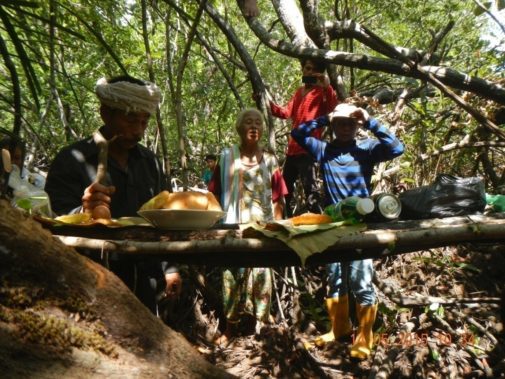
Community ritual to ask for help from the forest spirits to protect the mangroves from encroachment and destruction. Sudin Ipung/G6
The communities involved have demonstrated their resilience and ability to be stewards of their customary territories, but significant challenges remain that threaten their territories and practices in both the short- and long-term. Consolidating their community protocols will provide a clear basis for targeted dialogues and negotiation with government agencies and other stakeholders. Currently there are existing provisions in policy and legal frameworks that can be implemented by the government. However, challenges must be overcome to ensure the objectives can be achieved, including the elimination of possible conflicts of interest, appropriate recognition for various forms of communities’ customary laws and stewardship systems, ensuring equitable governance and effective management of natural resources in areas overlapping with communities’ territories, overcoming challenges with coordination and jurisdiction between government agencies, and promoting culturally appropriate research and education (Lasimbang, 2016).
A common recommendation across all of the communities is to seek recognition of their community protocols from the Native Court, especially where the state legal system has fallen short in its recognition of customary law and traditional knowledge and practices.
Sg. Eloi, Pitas
Any further development of the shrimp farm should be halted to prevent further damage to the mangroves and the project developers should pay for restoration of the mangroves destroyed. The Environment Protection Department should retract the environmental impact assessment clearance for the aquaculture project and undertake a public review, with full and effective participation of the villages in that area. An independent review should be undertaken of the impacts of the federal and state governments’ ‘poverty eradication’ programmes (such as the shrimp farming project). The community should be allowed to determine what form of development is appropriate to their way of life. Another legal option being considered is to work with the Drainage and Irrigation Department to recognise Water Conservation Areas in the community’s mangrove areas.
Alutok, Ulu Tomani
The Sabah Forestry Department should excise the community forest from the Class II Forest Reserve or reclassify it as a domestic forest reserve (Class III) and devolve governance and management responsibilities to the community, based on indigenous knowledge and practices. This arrangement should not impose any requirements to clear the forest under the guise of ‘poverty eradication’. At the very least, a co-management agreement should be established with the community for the community forest.
Kiau, Kota Belud
Sabah Parks should continue to assist with efforts to recognise the community’s conservation practices but should do so in ways that are tailored to each community in the Ecolinc (corridor) area, including by considering the pros and cons of Native Reserves and other forms of legal recognition more fully with the community before proceeding with gazettement. Sabah Parks and companies interested in tourism operations in the area should also assist the community in setting up eco-tourism initiatives in accordance with the community’s protocol and development plans. Another option being considered is to work with the Sabah Forestry Department to demarcate and gazette their community forest reserve in accordance with the community’s protocol.
Mengkawago, Tongod
Similar to Alutok, the Sabah Forestry Department should excise the community’s traditional territory from the Forest Reserve or at least reclassify it into a Class III Forest Reserve and devolve governance and management responsibilities to the community, based on indigenous knowledge and practices. At the very least, the Forestry Department, concessionaire and community should establish a co-management agreement to allow the community secure access to forest products for their subsistence use and to protect the trees on which the honeybees depend. The community should also be compensated with land agreed by the community that is of relatively equal size, quality and fertility as what has been cleared by the concessionaire. An additional option being considered to support their livelihoods is to work with the Forestry Department’s Social Forestry Unit to assist the community to establish a local enterprise for the harvested honey.
Terian, Ulu Papar
The state government should immediately halt plans to build the Kaiduan Dam and identify alternatives for addressing the city’s water supply needs, including by retrofitting pipes to stop leakages. Sabah Parks and the Ministry of Tourism, Culture and Environment should play a more active role in supporting the communities in Ulu Papar to resist the dam and should leverage the designation of the UNESCO Biosphere Reserve to recognise the communities’ contributions to water catchment stewardship and biodiversity conservation more broadly, and the need for sustainable economic activities in the area. This could include legally recognising Water Conservation Areas and Community Use Zones. The community’s watershed management protocols should be formally recognised and supported by all relevant government agencies.
Testimony
 Olon Somoi, 46 years old, Kampung Sungai Eloi, Pitas
Olon Somoi, 46 years old, Kampung Sungai Eloi, Pitas
“The mangrove is our home. It was devastated by the shrimp farm. We have no support from the leaders to defend our land. In 2012, we were threatened when we tried to hunt for food in our traditional hunting grounds. We are severely affected without our traditional foods. There are fewer lukan (shells), fish, and crabs. Some days, there are none. Land applications in Kampung Kuyu were cancelled in favour of the farm. We want ICCA to continue in our community. We are restoring our mangroves on our own, and we want them untouched. We will die defending our land.”
– Aunty Olon, Native Customary Rights Land defender
Download Report of the CCRI in Sabah, Malaysia here.
REFERENCES
Sabah Forestry Department, 2011. Sabah Forestry Department Annual Report 2010. Sandakan, Sabah. http://www.forest.sabah.gov.my/pdf/ar2010/index.htm
Lasimbang, J., 2016. “At least 5 communities practise ‘Tagal Hutan’. Workshop on Promoting Tagal Hutan to Conserve Traditional Indigenous Practice, Enhance Watershed Management and Address Climate Change. Daily Express, 18 February, p2a. http://www.dailyexpress.com.my/news.cfm?NewsID=106900
Lasimbang. J., 2016. “Tagal Hutan to conserve culture, land and forest through development of a Policy Framework”. http://www.fao.org/fileadmin/user_upload/rap/Asia-Pacific_Forestry_Week/doc/Stream_4/ST4_24Feb_Jannie_-_Tagal_Hutan_land_rights.pdf


